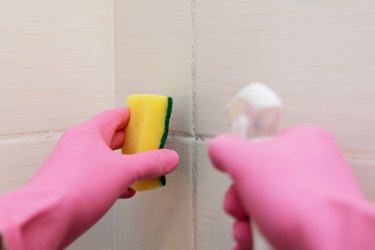Even if you haven't heard of sodium percarbonate before, there's a good chance you've already used it. It's a chemical compound composed of hydrogen peroxide and sodium carbonate, commonly known as washing soda, and it's the key ingredient in OxiClean and other oxygen bleaches. Considering how many ways there are to clean with oxygen bleach, it's hardly surprising that plain sodium percarbonate can be just as useful – and cheaper.
Sodium percarbonate always has to be combined with water to be effective. A basic ratio for a sodium percarbonate cleaning solution is about 2 ounces of powder per gallon of warm or hot water, but you might double or triple that amount for deeper cleaning. While it's much less risky to handle sodium percarbonate than chlorine bleach, it can still be an irritant, so wear gloves when cleaning with these solutions. Make a fresh batch of sodium percarbonate solution every time you need it, as it will start to lose its effectiveness after several hours.
Video of the Day
Video of the Day
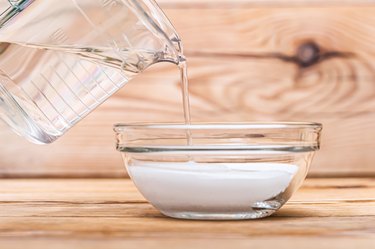
1. Whitening and Brightening Towels
Just a small amount of sodium percarbonate can restore dingy white towels to their former glory. Soak white towels and other yellowing linens in a sodium percarbonate solution. Let them soak for at least one hour or overnight and then rinse and wash the towels like normal. White sheers and curtains may be brightened this way too but check manufacturer cleaning instructions first.
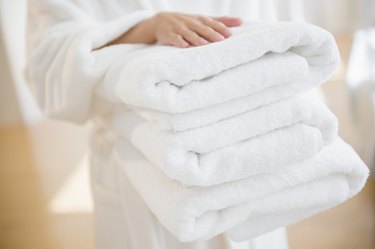
2. Cleaning Cutting Boards
Even a high-quality cutting board can become a breeding ground for bacteria over time. Every little gouge made by a knife cut creates the perfect place for germs to flourish. The disinfecting power of hydrogen peroxide makes sodium percarbonate a good option for deep cleaning a cutting board before putting it away. After washing it with dish soap, spray the board with the cleaning solution. Let it sit for 10 minutes or so and then rinse with hot water.
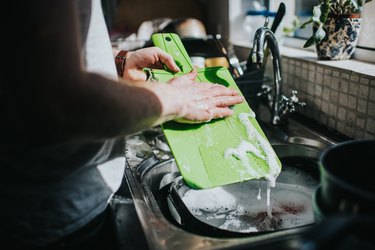
3. Scrubbing a Dirty Deck
Oxygen bleach has become a popular alternative to chlorine bleach for cleaning a grimy wooden deck. It's powerful enough to break down dirt and other scum but isn't corrosive like chlorine bleach. Swap out a sodium percarbonate solution for oxygen bleach to get similarly effective results. Spray down the area first and then mix the solution in a bucket and use a deck brush to scrub it into the decking. Let it sit for 15 minutes and rinse the deck with your hose.
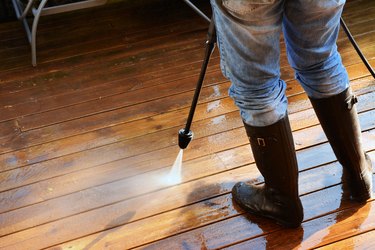
4. Cleaning Grungy Grout
Brightening the grungy grout in your tile floor is one of those household cleaning tasks that seems minor but can make a noticeable difference when you walk into the room. Use sodium percarbonate to scrub both the grout and the surrounding tile floor. Depending on how long it's been since the grout was last cleaned, you may need to use a more concentrated paste of sodium percarbonate and water instead of a liquid solution. Use a sponge or brush to apply the paste to grout and/or dirty tile and then wait 15 minutes or so before scrubbing and rinsing the floor.
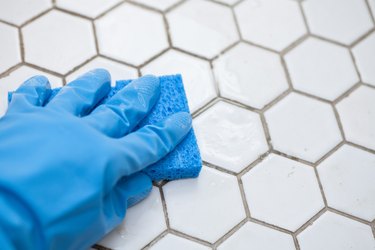
5. Stain Treatment on Carpets
Whether it's dried mud, red wine or even old pet stains, sodium percarbonate can dissolve a lot of the most stubborn carpet stains without damaging the fibers of the carpet itself. It's also useful for deodorizing, which is especially important with pet stains.
Fill a spray bottle with cleaning solution and spritz the stain. (Test the solution in an inconspicuous area of the carpet first.) Let it sit for a few minutes and then use a brush or microfiber cloth to work the solution into the stain. Repeat if necessary until the stain is gone. Blot the area with a clean, damp cloth and let it air dry.
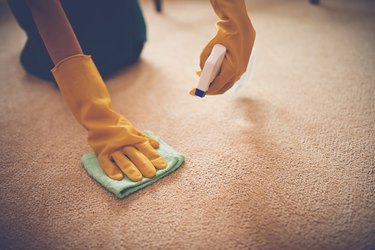
6. Laundry Stain Removal
Like oxygen bleach, sodium percarbonate has a lot of uses in the laundry room. Use it the same way you might use OxiClean or a similar product: as a pre-soak treatment to remove set-in stains and/or odors from most kinds of fabrics. (Like oxygen bleach, sodium percarbonate shouldn't be used on fabrics that require special care, like silk or leather.)
Soak clothing in a sodium percarbonate solution using hot water or warm water if you're treating something that's prone to shrinking, like cotton. Check the progress after an hour and let the clothing keep soaking if stains are still evident. Move the clothing to the washing machine and wash like normal with laundry detergent.
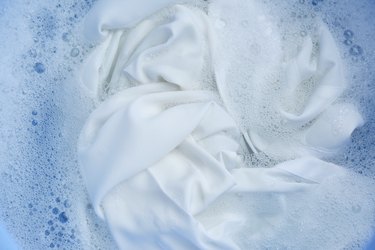
7. White Shoe Cleaner
The introduction of OxiClean and other oxygen bleaches made it easy to get white sneakers clean again without damaging the shoe materials like chlorine bleach might do. This is another job for sodium percarbonate, assuming your shoes are made of a material that's safe to clean with water. White canvas tennis shoes and sneakers can generally be washed this way but don't take chances with pricey suede or leather shoes. Soak shoes in a warm water solution for 15 to 30 minutes and then rinse and air dry them.

8. Cleaning and Descaling Coffee Makers
Commercial coffee machine cleaners often contain sodium percarbonate as a key ingredient. Cut out the middleman and use sodium percarbonate to flush out any germs and mineral deposits that might be hiding inside your coffee maker. Fill the machine's reservoir with cleaning solution and set it to brew until all the solution has run through the machine. Follow by brewing several pots of plain water to finish cleaning the machine.
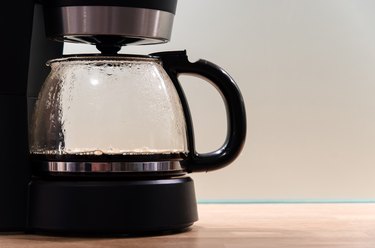
9. Toilet Bowl Cleaner
Sodium percarbonate is a handy tool for whitening and deodorizing your toilet bowl. After cleaning the toilet bowl with a brush, use a scoop to sprinkle sodium percarbonate powder all around the inside of the bowl. Let it sit for 15 minutes or so and then flush. Repeat if necessary.
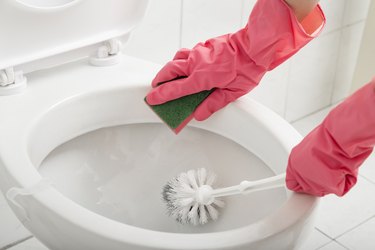
10. Mold and Mildew Treatment
For really extensive mold growth on hard surfaces, sodium percarbonate isn't going to be as effective as chlorine bleach. If you're dealing with just a small amount of mildew on a shower door or other hard surface, try treating the area with a strong sodium percarbonate solution made with hot water. You might ultimately need to use a stronger product to resolve a mold or mildew problem, but this is an eco-friendly first step.
